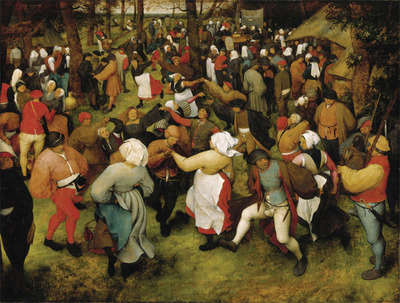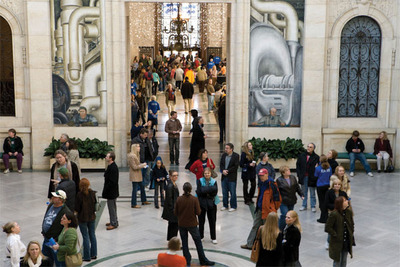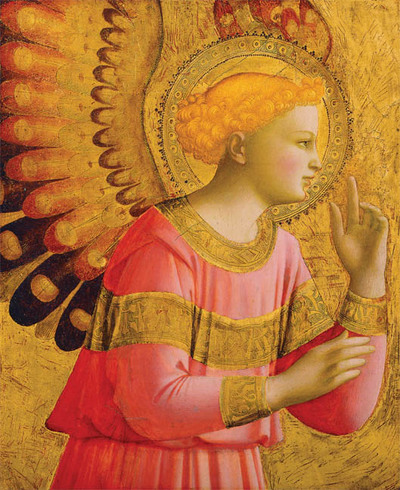Rates of Exchange
An urban society needs two institutions to deal with non-functional objects: the sanitation department and the museum.
—S. Dillon Ripley
(Secretary of the Smithsonian, 1964–84)
DETROIT IS CURRENTLY renowned for its vanishing. Only its debts have any substance. And its museum.
It cannot be entirely a surprise, then, that the holdings of the Detroit Institute of Arts (DIA) are being considered as salable assets, the returns from which could be used to pay off the billions of dollars owed by the local government to an imposing list of creditors. Since its collection belongs to the city, it is a uniquely public institution, unlike many other major museums that function as independent corporations. The irony is that public ownership makes its splendid collection vulnerable as a consequence of the municipal economic disaster.
This threat could simply be read as a form of hostage-taking, meant to produce a heightened sense of the crisis without any real intent to carry out a summary execution. But the mere possibility of such an outcome has provoked considerable comment, academic and outraged.
Jeffrey Hamburger, a professor of art history at Harvard, initiated a petition addressed to Kevyn Duane Orr, emergency manager of Detroit, the official who has been given responsibility for resolving the city’s economic quandary. With impassioned hyperbole, the document declares that the marketing of any of the museum’s collections “would seal the city’s shame” as “an act of draconian cultural iconoclasm without parallel in modern times.“ Having gathered some 5,000 signatures in less than a month, it belongs to that category of necessary, if futile, gestures that are among the last visible traces of a social conscience in this country.
That characteristic did not so clearly emerge in a recent exchange of letters in The New York Times that framed the issue around the question, “How many lives is a Rembrandt worth?” The discussion veered into self-righteous moral rectitude with much concern over destitute retirees denied their pensions, as if that was the only social disaster that might deserve noting.
Hypocrisy is always a near neighbor to such exchanges, especially when none of the correspondents raise what might be thought to be the more crucial forms of the question.

Rembrandt, Self Portrait in a Velvet Cape with Plume, 1638, etching.
Courtesy of the Detroit Institute of Arts
One of these would be: What are lives without Rembrandt worth? The closest that any of the participants come to this issue is an artist who became one because of having seen Rodin’s The Thinker perched outside the doors of the DIA. But this is both sentimental and private. A moral argument about the way the quality of all living is different because museums exist, even for those who never enter them, would need to posit a more defiant and inclusive alternative to the deeply pessimistic view that the only common human experience is economic suffering.
After all, the desperate social needs of Detroit are not unique to it. There is a logic that would suggest that all the art in all the museums of the world might be sold to bring comfort to the poor. This is a traditional charge against the Roman Catholic Church with its fully stocked Vatican Museums. Of course, the fact that the Sistine Chapel has a theoretical monetary value (as does the Detroit Industry fresco cycle by Diego Rivera) does not mean that anyone is in a position to buy them, although in these days of hedge fund capital perhaps that is no longer the rhetorical impossibility it once was.

Pieter Bruegel the Elder, The Wedding Dance, c. 1566, oil on oak panel.
But this brings the discussion around to another question that was also missing from The Times exchange. One of the writers who contributes to it does consider the madness of auctioning off the Parthenon as a moral gesture, but her sole alternative proposal to selling the treasures of Detroit is to suggest that a commission be established to determine the counter-value of keeping the collection in purely economic terms, balance sheet compared to balance sheet.
But why accept the assumption that a Rembrandt is worth anything at all, at least in terms that reduce it simply to its value in monetary exchange? Frank Robinson, a former director of museums at Williams College, the Rhode Island School of Design, and Cornell University, points out that art values have inflated to the point that a million dollars is a common price for a single object. And museums have helped to establish the precedents for these mutilated values, as they collected objects whose original worth was never thought of as transferrable. Now, wrenched from their context and purpose, the works become investments. There is an alchemy of museums that turns everything merely to gold, leaving the institutions as authenticators of economic value. In the process, museum custodians have become collaborators in their own destruction, since even the wealthiest museums usually find it impossible to acquire works independently in the current market.

Interior view, courtesy of the Detroit Institute of Arts
In the free-port storage vaults of Switzerland, paintings and sculpture have ceased to become art in any recognizable sense. They vanish from view, existing only as commodities of status and possession. This expanding category of art valuation reinforces the expectations of class privilege, and provides the comforting explanation of elitism, thereby freeing the larger community from taking responsibility for either its art or its artists.
If indifferent profiteering cannot be corrected by simply declaring works of art valueless in monetary terms, why not begin by establishing a system of price controls, with a cap at a level of affordability and a limit to the number of annual purchases any single institution is permitted to make? Once an object enters a museum collection, it would legally cease to have any economic value. Nothing can leave save through exchange or gift, but the values of such exchanges would be in achieving comprehensiveness and depth in a collection, instead of a competition for single masterpieces.
To accompany the plan, one might imagine a move away from the model of major depositories towards a more decentralized and broad redistribution of art. A precedent here might be the Fifty Works for Fifty States donations from the collection of Dorothy and Herbert Vogel whose own model of patronage was personal, engaged, and free of any mercenary interest whatsoever. Similarly, there was the Andy Warhol Foundation’s transfer of Warhol photographs to a large number of college and university museums throughout the country, though the foundation has not entirely abandoned the market for other transactions. My proposal might have international applications where claims for the repatriation of illegally acquired art objects could be resolved on the basis not simply of legal right, but of cultural obligation to recognize art as an inheritance without national boundaries. This would mean not only the return of looted objects but also the gift of legitimately acquired ones.

Fra Angelico, Annunciatory Angel, 1450–1455, gold leaf and tempera on wood panel.
Courtesy of the Detroit Institute of Arts.
It is this notion of art’s free transfer that confronts what is truly unsettling about the threat faced by the Detroit Institute of Arts, and that is the idea that the works that might be sold off came to the museum largely as donations. This potential betrayal of gifts strikes particularly deep. Whatever may have motivated these transfers of ownership (and surely some reasons may have been either nefarious or self-serving) they constituted a public gesture beyond the usual boundaries of profit and loss.
Permanent as they may seem, museums are always desperate offerings of fragile splendors in a raging world. And if a Rembrandt makes life worth living, then each of us should have the gift of one on view in a museum where we always can find it.
Stephen Vincent Kobasa is a writer, curator, and contributing editor to Art New England. His work has been published in the New Haven Independent, Big, Red & Shiny, Artes Magazine, and the Hartford Advocate.
